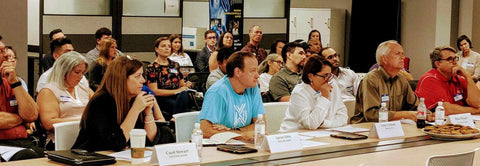
Does Handwriting Matter Anymore?
The Importance of Tracing and Handwriting - Even for Older Students
In this age of technology, when even young children often do school work on a computer, it can be easy to dismiss handwriting as a trivial skill. But the evidence shows that the benefits of sustained tracing and handwriting practice reach far beyond penmanship. In fact, the benefits extend to every single subject, even for older children.
The Wide-Ranging Benefits of Handwriting
Research shows that handwriting supports literacy and reading in ways that technology can't. A study published by the National Institute of Health found that when children had experience forming characters by hand, instead of typing them, it helped them identify them better later. “[H]andwriting is important for the early recruitment in letter processing of brain regions known to underlie successful reading.” James KH, Engelhardt L. The effects of handwriting experience on functional brain development in pre-literate children. Trends in neuroscience and education. 2012;1(1):32-42. doi:10.1016/j.tine.2012.08.001.
Experts have also found that taking notes longhand, instead of typing them, gives older students some similar benefits:
- Better content retention. As a student writes the words, it helps them remember more of the content than when typing notes.
- More critical thinking and analysis. Because taking notes by hand is slower than typing, students don’t have time to record it all. This forces them to think more deeply about the material and identify main points.
Doubek, James. "Attention, Students: Put Your Laptops Away." April 17, 2016. https://www.npr.org/2016/04/17/474525392/attention-students-put-your-laptops-away.
So if there are so many good reasons to have students write by hand, doesn't it make sense that they should be taught to do it well?

When students first begin to take the time to write neatly, it slows the pace of work. But, over time, speed improves and the benefits begin to show. First, they develop handwriting that they can read themselves – which means fewer mistakes! Second - and no less important - others can read their handwriting. Again, this means fewer errors from misunderstanding teachers. And then, because writing neatly becomes easier, their minds are freed to focus on other things. "[L]abored handwriting creates a drain on mental resources needed for higher-level aspects of writing, such as attention to content, elaboration of details, and organization of ideas." Spear-Swerling, Louise. "The Importance of Teaching Handwriting." http://www.readingrockets.org/article/importance-teaching-handwriting Accessed Sept. 23, 2018.
OK, But Tracing for Older Kids?
Tracing actually has its own benefits completely separate from handwriting. And those benefits extend to students much older than those you would typically think of when you think about tracing.
Tracing can be a calming, even soothing task - like the popular coloring books for adults. And, just as with handwriting, it helps students commit content to memory. Tracing is a form of kinesthetic learning, reinforcing the content as well as training their brains in the proper way to form letters and numbers.
Recently, I had the opportunity to work with a group of nine 4th and 5th graders who needed to work on their math skills. When they began to work with the PAGE A DAY MATH program, they were resistant to tracing at first. But as they progressed with the program they began to enjoy the process. They learned that it was not about racing to get a page done, but about carefully following the steps, tracing the facts with their best handwriting. And in only about seven days they started to show improvement in some remarkable areas. Not only did their handwriting and math skills improve, but they were also able to sit and work more patiently!
So tracing can be an invaluable activity, not just for kindergartners, but for students learning multiplication and division as well.
Tips for Tracing and Handwriting Success
Check to be sure your students are using a correct and relaxed pencil grip. Here is a chart that demonstrates common pencil grip errors. The correct position is illustrated in diagram J.
[Pencil Grip Postures Chart used with permission by Aussie Childcare Network]
Make it fun! I love to have colored pencils available for students. It helps make tracing and handwriting enjoyable. And it encourages children to slow down and focus on the process, rather than just rushing to complete the task.
For all of these reasons, PAGE A DAY MATH incorporates both tracing and handwriting at every level. It develops legible math handwriting while teaching math facts in a fun and encouraging way.
About the Author and Creator of Page A Day Math
 Janice Marks
Janice Marks
Janice began her career in education to pursue teaching pre-algebra at BASIS Tucson North, a charter school currently ranked as the sixth-best STEM school in the country by Newsweek. There she found joy in teaching math, working with parents, and inspiring children to believe in themselves and thrive. This experience, along with helping her own children succeed in math, led her to develop the Page A Day Math system.





